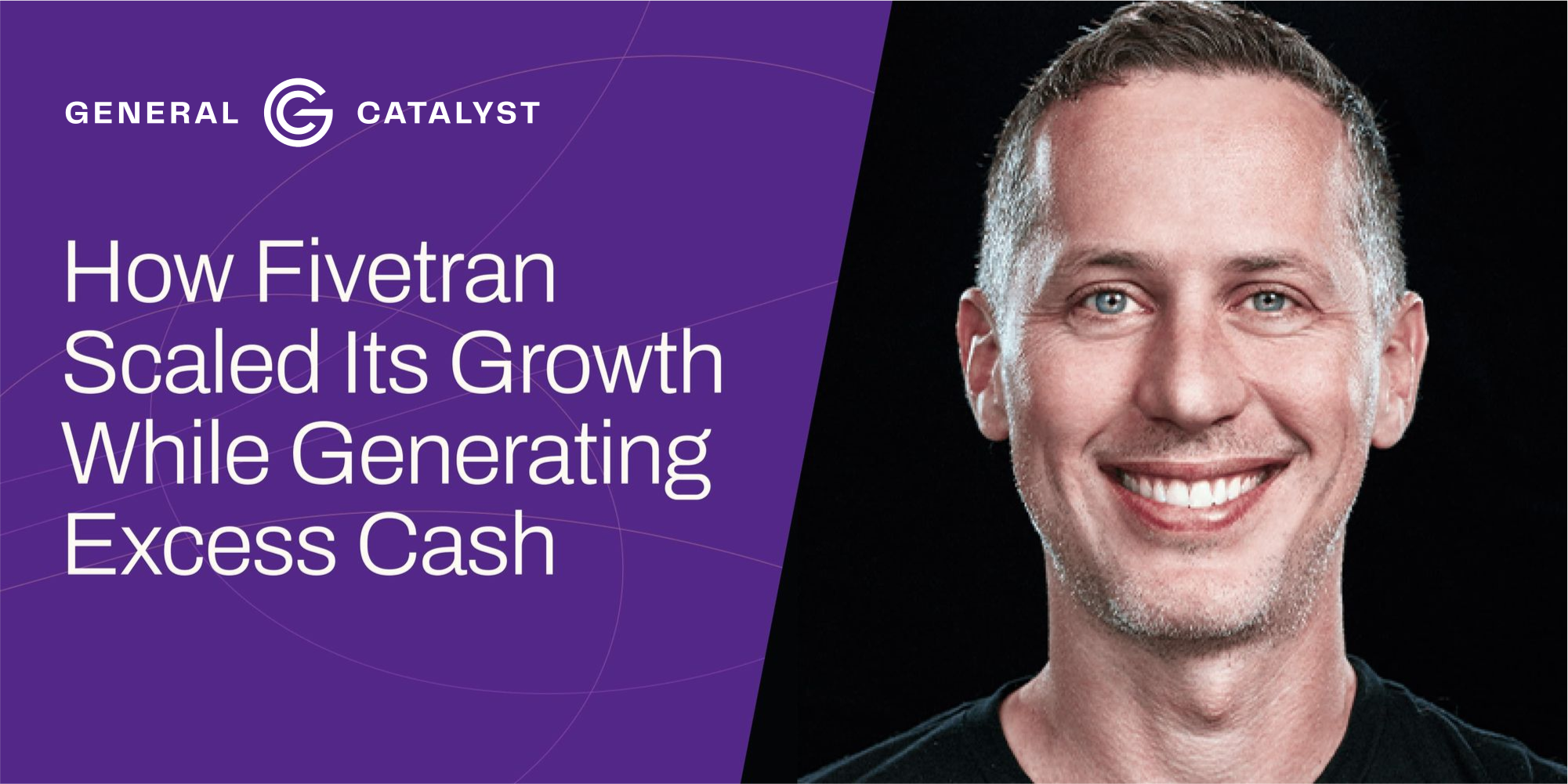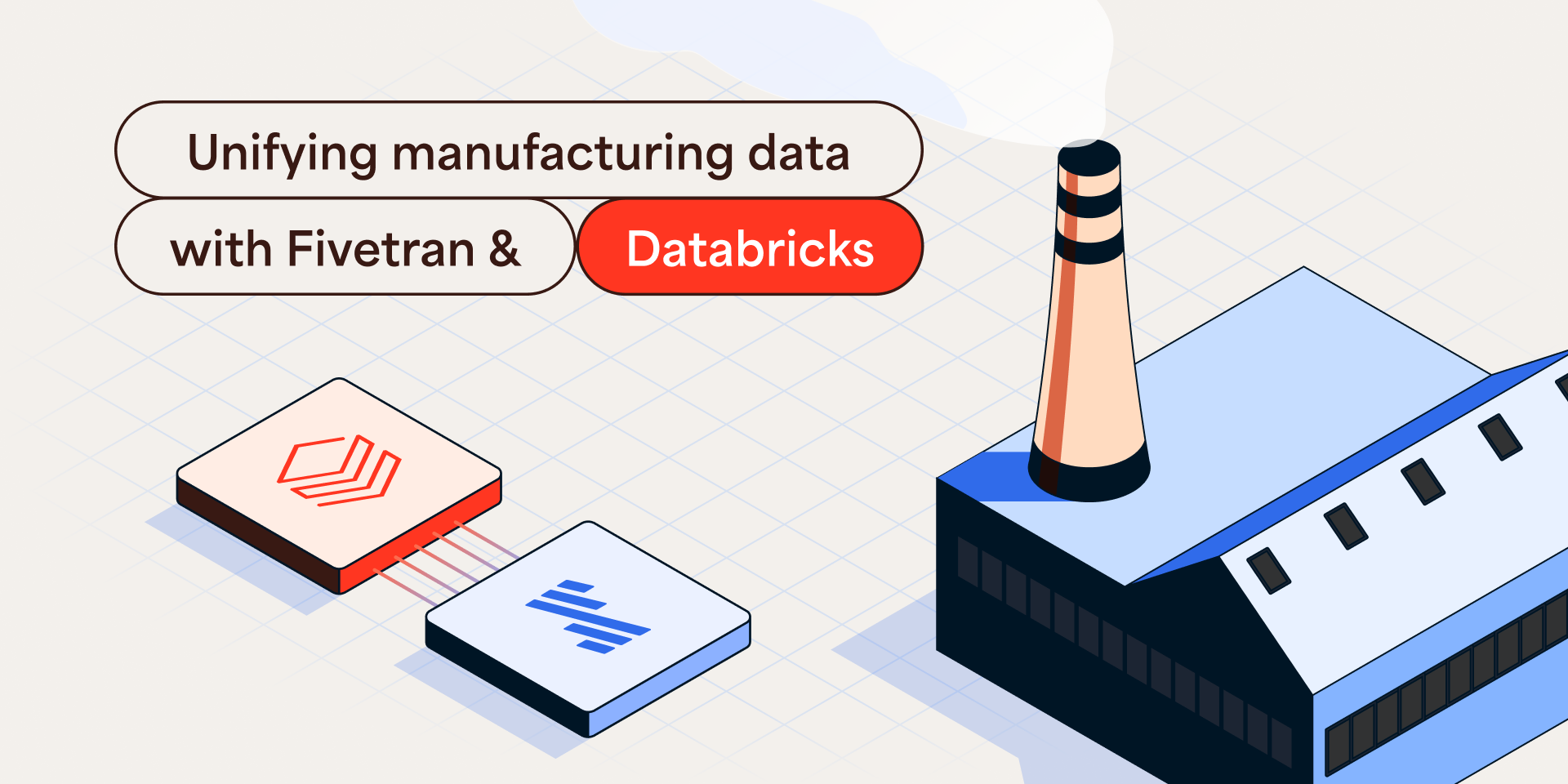This article was first published on General Catalyst's blog on May 9, 2024.
Last year, we wrote about the core insight behind General Catalyst’s Customer Value strategy (“CVF”). We’ve been fortunate to partner with many great businesses, including a public company, Lemonade [NYSE: LMND], whose founder and CEO wrote about our partnership with them.
Today, we want to spotlight our partnership with Fivetran, a Cloud 100 company, with whom we’ve worked for several years. In that time, the company has almost doubled revenue, while generating excess cash – a near unheard-of combination.
“The impact of General Catalyst’s Customer Value strategy is hard to overstate. In hindsight, it seems so obvious that this is the appropriate way to invest in and scale your GTM.”
- George Fraser, Fivetran’s CEO and co-founder
For years, Fivetran’s business demonstrated sound fundamentals. The company has scaled its product offering, customer base, and revenue, from its initial YC check to a $565mm Series D. Fivetran’s go-to-market is particularly effective at acquiring and then upselling a customer organically through product-led growth motions. But like most growth-stage businesses, while Fivetran’s sales motion is highly profitable over time, it burns money early in the life of each new cohort of customers it acquires.
Conventionally, a company like Fivetran would have only two options: raise more equity, adding to the liquidation preference stack and suffering dilution (even worse in a tough fundraising environment); or cut back on other long-term investments like product and engineering, starving the long-term ROI of the business. George and the Fivetran team were looking for a better, longer-term solution for his business, one that took them off the equity-raising treadmill without putting downside risk or encumbrances on the company. In particular, Fivetran wanted a partner who saw the enormous ROI, scalability, and strong unit economics of its customer acquisition engine – and wanted to help them pour fuel on the sales and marketing fire. General Catalyst created CVF to solve exactly this problem.
When GC’s CVF and Fivetran teams met, the company was spending $30-40mm per quarter on sales and marketing, with a consistent high-quality yield on that spend. Fivetran also knew it would need to continue scaling that spend in order to grow to the scale it knew it could achieve – you cannot cut your way to hypergrowth. However, investing in a company’s growth requires risk capital – money that is aligned with the performance of and purpose-built for the initiative it funds, in this case sales and marketing. While Fivetran could use traditional debt to fund a portion of its business, the risk is not isolated as the debt is due regardless of the performance of sales and marketing; it is not risk capital. Therefore, the most common way to scale sales and marketing spend continues to be to use equity. This phenomenon is not specific to Fivetran.
CVF solved this problem for Fivetran. CVF funds the majority of the company’s upfront investment on new customer acquisition and is paid back only by the cohorts of customers it helped acquire – once CVF hits its capped return, Fivetran benefits from the long lifetime value of the customers CVF helped acquire.
The effect on Fivetran’s fundamental ROI is dramatic. Fivetran’s customer acquisition engine already is exhibiting great ROI, yielding >75% on an IRR basis. With CVF, that number jumps into the high three figures – numbers that have proved durable even through the turmoil of 2022 and 2023 on some software businesses’ sales motions.
At the same time, almost as soon as Fivetran started working with CVF, an amazing trend occurred: Fivetran kept growing, but was no longer burning cash. In fact, since CVF and Fivetran started working together, the company’s cash balance has grown by >$60mm versus burning >$100mm without CVF.

We believe this trend is likely to compound dramatically in the next few years, as the cohorts CVF helped fund hit their capped return and Fivetran retains their long expected future lifetime values, without having spent their balance sheet to acquire them. This fundamental transformation of the business has occurred without Fivetran having incurred any incremental risk – CVF has no entitlement other than to a portion of what Fivetran’s customers it helped acquire.
Fivetran now faces, in George’s own words, a “high-class problem”’. They have been able to keep investing in growth while generating excess cash. As its cash compounds, Fivetran is in greater control of its own destiny – it can continue to invest further in its growth, double down on product and engineering, look at M&A opportunities, and more. It can also, in the future, use its own balance sheet to clean up its capital structure and/or provide employee liquidity.
We believe this innovative partnership demonstrates the power of a business reducing its cost of capital in a thoughtful, risk-aligned manner. The vast majority of technology companies have funded themselves entirely with equity, which fundamentally constrains their ability to compound and generate optionality for founders and businesses.
If you want to bring the same thoughtfulness to your own business’ approach to growth, please get in touch with Pranav Singhvi (psinghvi@generalcatalyst.com), Harry Elliott (helliott@generalcatalyst.com) and Team GC.

















.svg)
.svg)
.svg)